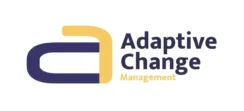The Pitfall of Uniformity: External Dependence and Inefficiencies
In the rapidly changing business world, organizations are increasingly adopting agile models to enhance their ability to adapt and respond swiftly. Unfortunately, the so-called agile journeys towards organizational agility often omit the engagement of internal experts and lean towards a team-centric approach. Postponing tasks and failing to strategically engage current experts, ranging from product management to marketing, does not align with the core competencies and goals of knowledge workers.
The main disadvantages lie in the combination of administrative expertise with increased capacity and the implementation of dual operational structures.
- Complexities: Crafting an organization-centric model inadvertently introduces complexities. The convergence of various factors mostly leads to interference and potentially impedes operational fluidity.
- Challenges of Stagnation: A design-centered product development system can result in a stagnant system due to increasing administrative efforts.
- Resource-intensive Transformation: An organization-centered design demands a significant investment of time and external resources.
Adopting an ineffective, one-size-fits-all approach in product development can lead to external dependence. Organizations might rely more on external consultants and experts, resulting in unproductive administrative expenses.
- Hindrance in Cultivating In-House Expertise: Engaging internal experts, such as product managers, project managers, or marketing professionals, is a vital step to avoid dependence on external support. Postponing this engagement can limit the organization’s ability to effectively leverage its own resources.
- Increasing Complexities of Duplicated Efforts: This leads to delays in product development processes. Despite the focus on flexibility, relying on rigid approaches extends the completion time of products and services. The disadvantages of delaying value and business outcomes include postponing the delivery of company, employee, and customer value.
- Implementing One-Size-Fits-All Approaches: Adopting an ineffective, one-size-fits-all model can result in unproductive administrative expenses.
The disadvantages of delaying value and business outcomes include postponing the delivery of company, employee, and customer value. We’ve analyzed that enhancing the skills and expertise has resulted in heightened confidence in product development initiatives. By aligning progress with the collaborative efforts of experts, who bring diverse insights and skills to the table, we have observed remarkable enhancements in both innovation and efficiency. Thus far, organizations must carefully balance the benefits of streamlined processes and structural innovation against potential hurdles such as interference and stagnation in product development processes. By adopting an adaptive perspective and engaging internal expertise, organizations can navigate these complexities to achieve agile success that drives innovation and sustainable growth.
The Realm of Companies’ Cultural Value System – Why?
Without fail, respecting the special corporate culture is not an empty phrase. Avoid forcing your company into a new cultural value system or mindset. It’s better to discover how to gain an invaluable edge for achieving a stronger position amidst unpredictable dynamics. It is safe to say that the company’s cultural value system is a highly underestimated success factor for predictability, certainty, and stability, much like national cultures are. Knowledge workers are emotionally connected to this cultural value system; that’s why they joined, and consequently, their trust is built around this enterprise self-concept. Sociologically speaking, the organizational culture is the essence of the organization. Therefore, it’s important to recognize that this success factor cannot be overstated. As mentioned above, combining business outcomes and technological knowledge with impactful sensemaking systems to manage the unexpected is a fundamental foundation to ensure meeting customer requirements by the promised date. Hence, the focus should be on rapidly adaptive change systems with predictable product and service deliveries. Highly successful Adaptive Change Management results in mindful attention to enhancing productivity, scaling knowledge work, and concentrating on time variables to effectively shorten Time-to-Market (T2M) and maintain and cultivate satisfied customers.
The New Normal
Industries now experience frequent and unpredictable changes in both technologies and markets. J.A.J. Schumpeter introduced the term “creative destruction” to explain how old things are constantly replaced by new ones. This idea emphasizes the continuous process of change. As a result, the New Normal of unpredictability essentially means that constant change is the norm, where old things are always replaced by new ones. We need to recognize that businesses are usually in a state of dynamic imbalances. However, there are three consistent factors in predictable structures: the company’s self-understanding, its cultural values, and the ongoing effort to keep and create new customers.
Unlocking Replicable Adaptiveness: Managing Dynamic Success
Adaptability relies on reliability—a core foundation. In product creation, embracing adaptability is essential, enabling success amid unending change. This underscores the need for versatile adaptability, like a trusted tool, crafted from diverse elements to fortify a company, not just for survival, but for seamless navigation of challenges.
Amid continuous change, the hurdle of transaction costs—time and effort—stands tall. The remedy is trimming these costs across product creation aspects, easing change and ensuring consistency. Even amid uncertainty, companies should aim for positive outcomes. In swift change, smooth information flow and quick decisions are key. Systems for rapid information sharing and decision-making empower quick responses, even amid uncertainty.
Raise Prodctivity of Knowledge Workers
Scaling innovation cycles, for instance in product development systems, is an important component of any business strategy. It’s all about reducing costs within your delivery systems. However, the adaptive innovation and identifying the appropriate zones for adaptation to reduce transaction costs are integral to the architecture of Adaptive Change Management.
Empower Your Change
Key Advantages Awaiting You
Team Unity
Nurture a collaborative atmosphere that strengthens bonds and drives synergy across teams.
Growth Mindset
Enhance resilience with a focus on continuous learning and adaptability to maintain relevancy.
Innovative Solutions
Encourage creative thinking and effective problem-solving to ensure swift adaptations in challenges.
Inclusive Culture
Foster an environment where every member feels valued and empowered to contribute their insights.
Fill out the form below, and we will respond within 48 hours.
Contact Us
We Shape The Future!
valuable. adaptive. innovative.
Our path of cooperation: Building trust, fostering relationships, and delivering value.
Get In Touch
- +381 65 6251 806
- +43 3322 43215
- +43 3322 43215
- [email protected]
Hours
- Mon-Fri 9:00AM - 5:00PM
- Sat 10:00AM - 2:00PM
Call us

+43 664 66 53 975

+381 65 6251 806

+43 3322 43 215

+43 3322 43 215
Trust is one of our most prized assets! We don’t make personal data available to other third parties for use.

